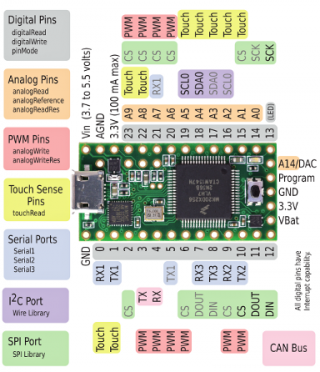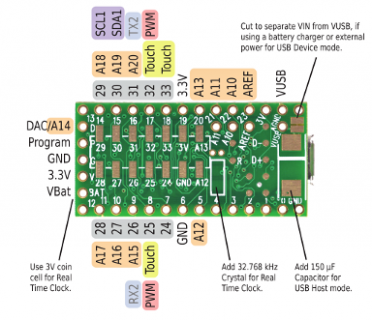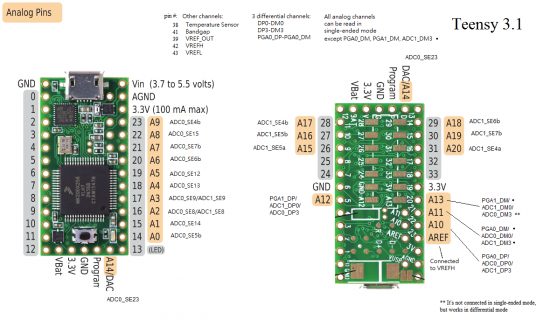instelisense
Member
Hi!
I'm making MIDI drums with about 20 piezo sensors. Teensy 3.1 have 21 analog inputs.
I don't understand part of pinout diagram:
A18 = A0
A19 = A1
A20 = A2
I will be grateful if someone can explain me that.
Also, should I use Zener (3.3 V) in parallel with the piezo or just 1 MOhm resistor?
I'm making MIDI drums with about 20 piezo sensors. Teensy 3.1 have 21 analog inputs.
I don't understand part of pinout diagram:
A18 = A0
A19 = A1
A20 = A2
I will be grateful if someone can explain me that.
Also, should I use Zener (3.3 V) in parallel with the piezo or just 1 MOhm resistor?




